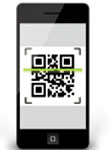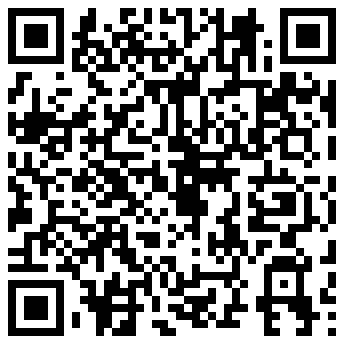 Quick Response (QR) codes originated in Japan under Denso Corporation, a Toyota Motor Corporation subsidiary, and were intended to hasten the code reading process, while at the same time allowing for more data to be captured in a single scan. Their efficiency was harnessed to help track vehicle parts during the manufacturing process, but has now spread across every industry as a savvy square for sharp consumers. The black and white codes have become such a popular feature in advertisements, in particular, that they can be spotted on nearly any flat surface, from magazine ads to company cars. So what’s the big deal? What do consumers miss by not taking less than one second to scan a QR code on an advertisement from a favorite store, restaurant or service provider?
Quick Response (QR) codes originated in Japan under Denso Corporation, a Toyota Motor Corporation subsidiary, and were intended to hasten the code reading process, while at the same time allowing for more data to be captured in a single scan. Their efficiency was harnessed to help track vehicle parts during the manufacturing process, but has now spread across every industry as a savvy square for sharp consumers. The black and white codes have become such a popular feature in advertisements, in particular, that they can be spotted on nearly any flat surface, from magazine ads to company cars. So what’s the big deal? What do consumers miss by not taking less than one second to scan a QR code on an advertisement from a favorite store, restaurant or service provider?
In order to be interpreted by a smartphone or tablet, a third party barcode scanner is needed to decode the information, such as Google Goggles, App World, QR Droid and the popular Scan. Certain readers are capable of generating codes, as well, such as Qrafter. Since most QR code reader apps are available at no cost, the squares seen everywhere are easily accessible to everyone. Once scanned, most code readers are equipped with the ability to display text, open URLs in a browser, send emails or text messages, establish a geolocation and call other devices. While some readers don’t have all of these capabilities, the technology is moving toward making codes more user friendly. QR codes are being considered for use in launching native Apple apps on Apple devices, opening certain instant messaging clients, such as Skype, opening specialized applications, including feed readers, and opening virtually any application. Right now, you can scan a code on an advertisement to get a special deal, or scan a code on a restaurant menu to get nutritional information. Consumers can lean on QR codes to slide them discounts under the radar and make tasks like punching a loyalty card more efficient. Whether it’s checking in to the Krispy Kreme rewards app or scanning an event into your smartphone calendar, QR codes buy you back those minutes otherwise spent in longer processes.
A few technology researchers question whether or not the codes are already becoming outdated, proving to be too much of an inconvenience for customers on the fence about engaging with the code’s source. This is attributed to connectivity being low in the sense that data plans weren’t as widespread in the past, rendering QR codes useless when smart devices couldn’t launch the code’s associated website. However, interest in using apps is now greater than ever, and as that interest continues to grow, so does the efficiency of codes and readers. Marketers are predicted to continue using these codes moving forward, but with a more cohesive set of goals and messages. With simpler readers for customers and wider awareness of what QR codes accomplish, fluency with the dotty squares may reach an all time high.
 Try It! Scan the QR code to tell us that you would like to see QR codes in ads and articles in Independent Retailer Magazine. As a bonus you will find our expert guide on how to create QR Codes for your business.
Try It! Scan the QR code to tell us that you would like to see QR codes in ads and articles in Independent Retailer Magazine. As a bonus you will find our expert guide on how to create QR Codes for your business.